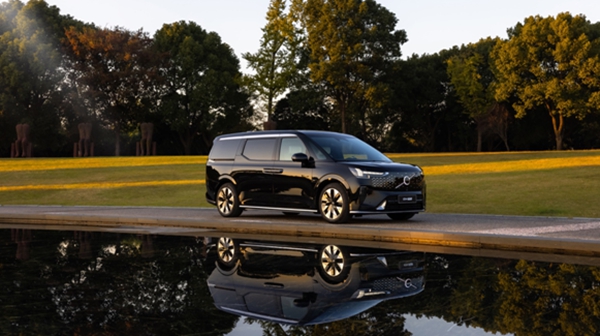At a new high, Volvo Car Greater China sold more than 180,000 vehicles in 2023.
China Economic Net, January 9 (Reporter Guo Yue) Recently, Volvo Cars released data: In 2023, the global sales volume reached 708,716 vehicles, of which 180,234 vehicles were sold in Greater China, all reaching record highs. The continuous improvement of brand power and the steady advancement of electrification transformation have also become highlights.

Specifically, as of December, 2023, Volvo Cars has achieved positive growth in global sales for 16 consecutive months, and the sales share of pure electric vehicles has climbed to 16%.
In the Chinese mainland market, in 2023, Volvo Car’s new energy sector performed particularly well, with sales increasing by 25% year-on-year. At the same time, from January to November, 2023, the market share of Volvo Cars in the luxury fuel car market in Chinese mainland reached 6.3%. Focusing on the performance of specific models, in 2023, Volvo S90 sold a total of 40,379 vehicles, a year-on-year increase of 22%; Volvo XC90 sold a total of 19,615 vehicles, an increase of 11% year-on-year; Volvo XC60 sold a total of 70,811 vehicles, a year-on-year increase of 10%.
In terms of new product promotion, Volvo Cars has ushered in new progress in a number of pure electric vehicles. In 2023, the pure electric luxury MPV-Volvo EM90 was launched in the world and opened the reservation in Chinese mainland. In 2024, the brand-new all-electric flagship SUV-Volvo EX90 and the brand-new all-electric luxury SUV-Volvo EX30 will be listed in Chinese mainland one after another. Three all-electric vehicles for different market segments will help Volvo Cars fully launch its new energy market in 2024.
At the same time, Volvo Cars is also actively building a new business model for pure electric vehicles and adapting its layout. At present, in addition to nearly 300 dealer operation outlets, Volvo Cars has 46 city center stores and brand experience stores, and the "direct sales+dealers" model has begun to take shape.
In addition, Volvo Cars has also established a perfect energy-replenishing system covering all scenarios of users’ travel, covering four scenarios: home charging, public charging, dealer charging and emergency charging. Up to now, Volvo Cars has joined hands with third-party partners to access more than 600,000 charging resources, covering 330+ cities.
More than that, in addition to new products and new business models, in 2023, Volvo Cars also established a stable and far-reaching electrification transformation system by continuously promoting localized innovation and carbon neutrality in the whole value chain. In China, Volvo Cars has continuously increased its investment. In 2023, the brand-new Shanghai Design Center and the Asia-Pacific Software Integration Center were put into use one after another, and they worked closely with the brand-new software testing center in Gothenburg, Sweden, to continuously evolve and iterate the safety, software and hardware strength of Volvo Cars.
Focusing on the goal of "becoming a climate zero-load benchmark enterprise in 2040", Volvo Cars also actively promotes the low-carbon transformation of the supply chain, including not only the production and manufacturing ends, but also the procurement and logistics chain. On the basis of the previously announced goal of reducing bicycle carbon emissions by 40% from 2018 to 2025, Volvo Cars further accelerated its actions, including announcing at the first chain Expo in 2023 that it would promote the "Hundred Green Electricity" project of the first-tier supplier in China in 2024, and announcing plans to reduce bicycle carbon emissions by 75% compared with the 2018 benchmark in the subsequent COP28 period.
In 2023, Volvo Cars continued to sharpen its brand image. While promoting product innovation, we will adhere to the brand concept of safety, sustainability and personalization, and lay the foundation for market performance in 2024. Specifically, in 2023, Volvo Cars released the "World Tree Intelligent Safety System", which further expanded the safety of traffic travel from the traditional active and passive safety to four different safety spaces: inside, outside, body and people, and constituted a more comprehensive safety system.